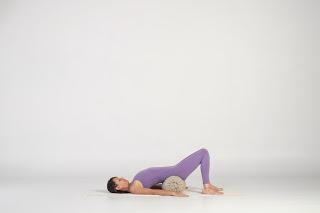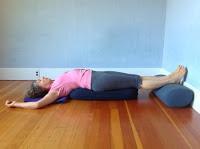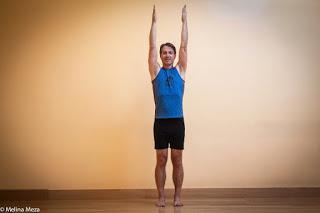
The Opening by Melina Meza
“Take a step, no matter how small.” ~ BKS IyengarRecently I read some comments about mild depression and how various people dealing with it had learned to “derail” the downward spiral they felt was impending by taking a simple, positive step. In one case, the person said that they would get up and clean “something, anything” and that positive action alone seemed to stop the spiral and put them back on track. Another person said for them it was making the bed, something I’ve seen recommended elsewhere as a positive way to start the day with a minor accomplishment under their belt. And the first person reported that during a particularly difficult time, their doctor had said that they should at least get up and brush their teeth in the morning and before they went to bed at night so it would it be “a day not lost.” And that simple act of self-care did help snap them out of their funk.
That reminded me of an article I read recently One Small Step at a Time: Patricia Walden on Yoga for Depression in which yoga teacher Patricia Walden said that when she consulted BKS Iyengar about her depression, he said, “Take a step, no matter how small.” So for us yoga practitioners, that small step can be practicing a single yoga pose! After all practicing a yoga pose can have a strong effect on how you are feeling (various poses can be uplifting, energizing, calming, etc.). See Yoga and Your Emotions for information about this. And if you don't have mild depression, but occasionally suffer from the sadness (who doesn't?), these same small steps can help you shake off a case of the blues.
For depression, backbends are considered to be the most effective poses for counteracting both lethargy and sadness. According to One Small Step at a Time: Patricia Walden on Yoga for Depression, this is because chest opening poses “counteract the closed, collapsed chest and shallow breathing common in people suffering from depression.” I, myself, certainly find practicing backbends to be energizing and uplifting, though it’s not always possible to motivate myself to practice them. So I was interested to read in One Small Step at a Time: Patricia Walden on Yoga for Depression, that for those who have time for just one pose (or possibly the motivation to take just one small step) Iyengar recommended practicing Bridge pose (Setu Bandha Sarvangasana). This pose is a gentle inversion, so it calms your nervous system and quiets your mind. But it’s also a chest opener, so it provides the uplifting qualities of a backbend.
Although the article showed a photo of active Bridge pose, I’m going venture a guess that Iyengar actually meant the supported version of the poses (which was obviously one of his favorite poses as he invented a special bench just for practicing the pose). The supported version is not only more quieting for the mind but it’s easier to practice and when you’re depressed trying to do an active backbend can feel too challenging. And, of course, you can hold the supported pose for long periods of time, which allows you to maximize the benefits.
To do the supported version, you can do it either with bent legs and bolster under your pelvis, as in Featured Pose: Bridge Pose, or with straight legs, as in All About Supported Inverted Poses. I'd hold the pose for at least 5 minutes.


If you want to try something other than Bridge pose, Patricia Walden recommends moving between Mountain pose (Tadasana) and Arms Overhead pose (Urdva Hastasana). When you bring your arms overhead, you’re moving into a slight backbend in your upper chest.

One Small Step at a Time: Patricia Walden on Yoga for Depression gave the following instructions:
“Stand in Tadasana, sweep your hands upward into Urdhva Hastasana and then gaze upward at your fingers. You might even try coming up on the tiptoes. Reach upward with the body and mind. After releasing the arms back to Tadasana, wait and observe the feelings that come.
Next, sweep your arms out to the side, and, while looking ahead, let your mind’s gaze travel outward to the fingertips. Keep drawing the arms outward, opening the chest and keeping the mental gaze broad. Then release and stand quietly for a moment, keep the chest open and feel the effects.”
I, myself, would do this pose dynamically, slowly moving into Arms Overhead pose with an inhalation and back into Mountain pose on an exhalation, repeating for six rounds if possible. As in dynamic Bridge pose, moving with your breath helps keep your mind engaged in the pose and shake off some of your lethargy.
Taking a small step like this one can be empowering, as it teaches you there are simple actions you can take to foster your emotional wellbeing, and that you’re not just at the mercy of downward spiral whenever it happens. This is also an excellent way to start a regular home practice. As you practice one of these poses each day, you may find one pose leads to another and then another, and before you know it you will have a new habit of practicing regularly for your emotional and physical well-being.
Subscribe to Yoga for Healthy Aging by Email ° Follow Yoga for Healthy Aging on Facebook ° Follow Baxter Bell Yoga on Instagram ° Join this site with Google Friend Connect

